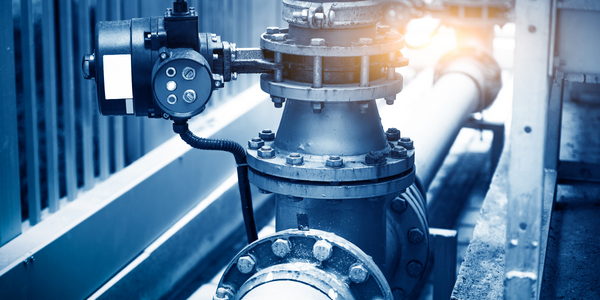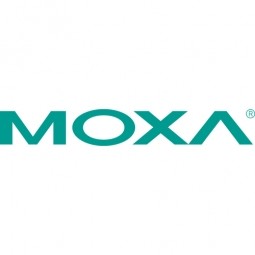下载PDF
Cellular RTU for Building Beijing Water Pipeline Remote Monitoring Systems

技术
- 自动化与控制 - 监督控制和数据采集 (SCADA)
- 网络与连接 - 蜂窝
适用行业
- 公用事业
适用功能
- 商业运营
挑战
供水管道压力需要保持在 0.3 Mpa,以便为家庭、企业和工厂提供可靠的自来水流。水务公司使用实时监控系统来实现一致的水压管理,可以快速响应任何突然的水压下降。系统要求- 监控广泛分布的水管网络的所有分布式压力点 - 监控和显示中央 SCADA 系统 HMI 上每个压力值的实时数据 - 稳定的蜂窝通信网络 - 高可扩展性
客户
未公开
解决方案
Moxa ioLogik W5340 是专为远程监控系统设计的蜂窝 RTU 解决方案。与射频监控解决方案相比,蜂窝提供了一种更经济高效的方式来构建远程监控解决方案。传统的蜂窝产品使用轮询来请求数据,这需要静态和公共 IP。 Moxa 的 ioLogik W5340 可以主动更新 SCADA 系统的压力值,无论它使用何种 IP 地址。此外,主动报告提供了一种从远程位置获取实时数据的方法,这对于轮询系统是不可能的。作为一个简单的比较,传统的轮询架构需要两到三分钟才能从不同的监控站点获得四个不同的压力值。 ioLogik W5340 可以使用主动通信在几秒钟内获取状态。此外,ioLogik W5340 还支持本地智能,因此控制逻辑可以在前端设备中执行和存储,实现真正的 PC-free 解决方案。 ioLogik W5340 包含免费的 Active OPC Server 软件,可与任何 SCADA 系统无缝集成。除了 Active OPC Server,免费的 Moxa DA-Center 软件允许用户将 I/O 数据直接输入数据库或快速生成 Excel 文件进行数据分析。
收集的数据
Connectivity Status, Network Performance (bits/s), Water Pressure
运营影响
相关案例.

Case Study
IoT Solutions for Smart City | Internet of Things Case Study
There were several challenges faced: It is challenging to build an appliance that can withstand a wide range of voltage fluctuations from as low at 90v to as high as 320v. Since the device would be installed in remote locations, its resilience was of paramount importance. The device would have to deal with poor network coverage and have the ability to store and re-transmit data if networks were not available, which is often the case in rural India. The device could store up to 30 days of data.

Case Study
Automation of the Oguz-Gabala-Baku water pipeline, Azerbaijan
The Oguz-Gabala-Baku water pipeline project dates back to plans from the 1970’s. Baku’s growth was historically driven by the booming oil industry and required the import of drinking water from outside of the city. Before the construction of the pipeline, some 60 percent of the city’s households received water for only a few hours daily. After completion of the project, 75 percent of the two million Baku residents are now served around the clock with potable water, based on World Health Organization (WHO) standards. The 262-kilometer pipeline requires no pumping station, but uses the altitude differences between the Caucasian mountains and the capital to supply 432,000 m³/d to the Ceyranbatan water reservoir. To the people of Baku, the pipeline is “the most important project not only in 2010, but of the last 20 years.”

Case Study
GPRS Mobile Network for Smart Metering
Around the world, the electricity supply industry is turning to ‘smart’ meters to lower costs, reduce emissions and improve the management of customer supplies. Smart meters collect detailed consumption information and using this feedback consumers can better understand their energy usage which in turn enables them to modify their consumption to save money and help to cut carbon emissions. A smart meter can be defined in many ways, but generally includes an element of two-way communication between the household meter and the utility provider to efficiently collect detailed energy usage data. Some implementations include consumer feedback beyond the energy bill to include online web data, SMS text messages or an information display in consumers’ premises. Providing a cost-effective, reliable communications mechanism is one of the most challenging aspects of a smart meter implementation. In New Zealand, the utilities have embraced smart metering and designed cost effective ways for it to be implemented. The New Zealand government has encouraged such a move to smart metering by ensuring the energy legislation is consistent with the delivery of benefits to the consumer while allowing innovation in this area. On the ground, AMS is a leader in the deployment of smart metering and associated services. Several of New Zealand’s energy retailers were looking for smart metering services for their residential and small business customers which will eventually account for over 500,000 meters when the multi-year national deployment program is concluded. To respond to these requirements, AMS needed to put together a solution that included data communications between each meter and the central data collection point and the solution proposed by Vodafone satisfied that requirement.

Case Study
NB-IoT connected smart meters to improve gas metering in Shenzhen
Shenzhen Gas has a large fleet of existing gas meters, which are installed in a variety of hard to reach locations, such as indoors and underground, meaning that existing communications networks have struggled to maintain connectivity with all meters. The meter success rate is low, data transmissions are so far unstable and power consumption is too high. Against this background, Shenzhen Gas, China Telecom, Huawei, and Goldcard have jointly trialed NB-IoT gas meters to try and solve some of the challenges that the industry faces with today’s smart gas meters.

Case Study
OneWireless Enabled Performance Guarantee Test
Tata Power's power generation equipment OEMs (M/s BHEL) is required to provide all of the instrumentation and measurement devices for conducting performance guarantee and performance evaluation tests. M/s BHEL faced a number of specific challenges in conducting PG tests: employing high-accuracy digital communications for instrumentation, shortening setup and dismantling time, reducing hardware required, making portable instrument setup, avoiding temporary cabling work and the material waste costs

Case Study
British Gas Modernizes its Operations with Innovative Smart Metering Deployment
The UK government has mandated that smart meters are rolled out as standard across Great Britain by end of 2020, and this roll-out is estimated to create £14 billion in net benefits to the UK in consumer energy savings and lower energy generation demand, according to the Oxford Economics report, “The Value of Smart Metering to Great Britain.” While smart-metering systems have been deployed in many countries, the roll-out in Great Britain is unique because it is led by energy retailers, who have responsibility for the Electricity and Gas meters. The decision to have a retailer-led roll out was made by DECC (Department of Energy and Climate Change) to improve customer experience and drive consumer benefits. It has also led to some unique system-level requirements to support the unique local regulatory model.





